
So, if I had to pick something dramatic to get back into taking photos, the total lunar eclipse of 2019 really isn’t a bad choice. And it was certainly better than most of my other options, which are bare trees, overcast skies, and mud. We’ve really had too damn much rain lately.
The title has a double meaning. In part, it refers to the conditions: we had reasonably clear skies for this eclipse, which is rare enough because waaayyy too many astronomical events that I might have tackled in the past were clouded out (or on occasion ruined by a too-full moon.) A couple of very thin patches of clouds passed through, but very quickly, so I had mostly had a good view overall. That “very quickly” part is a hint at the down side of the conditions, which I mentioned in the previous post: markedly low temperatures with some gusty winds, making wind chill to be absolutely bitter – as I type this less than an hour after wrapping up photography for the evening/morning, it is -4°C (24°F) and dog only knows what the wind chill dropped it down to. All I can say is that, between brief sessions I was bringing the camera back into the house, and as I removed the memory card from the last session, the card itself was chilly. Touching any metal part of the tripod got painful in a hurry (yes, I was working without gloves because I needed the fine touch to keep making adjustments.)
The other meaning of the title refers, of course, to the images. The long lens I have is far from ideal and will be replaced eventually, but more of the impact came from the subject itself.
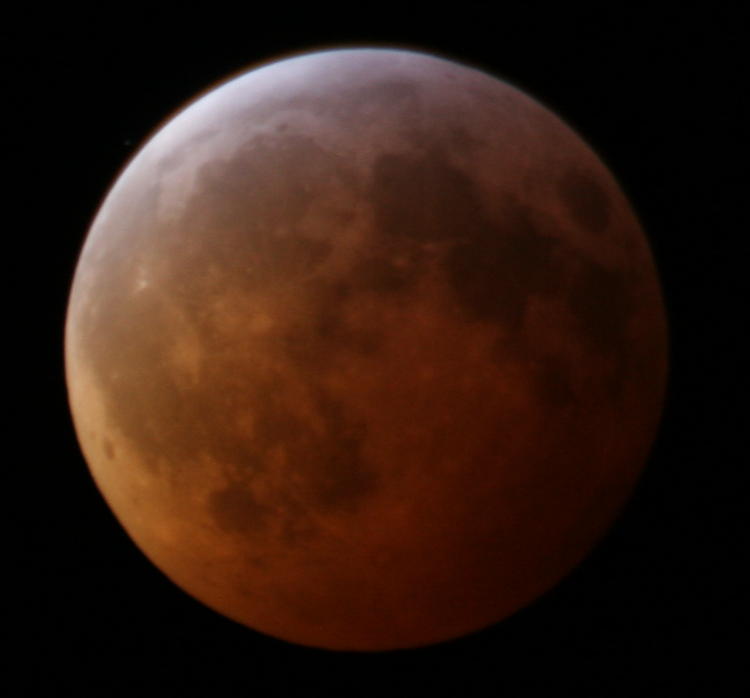
What you’re seeing here is much brighter than what you’d see in person. The moon was so dim that I was having a devil of a time trying to get it within the viewfinder, and focus was strictly up for grabs – I did a lot of focus bracketing hoping to nail at least one in sharp focus. But there’s also the side-effects of all this, because a dim subject needs one of two things, if not both: a longer shutter speed, or a higher ISO. A longer shutter speed isn’t the best option, because the Earth is still turning, with the camera carried along, so there’s apparent motion from the moon at high magnification. But boosting the ISO doesn’t work all that well either, especially not with the Canon 30D, because its upper ranges are next to worthless – the grain and overall blotchiness at anything above ISO 400 doesn’t make for good images. The frame at top was shot at 1.3 seconds, f5.6, ISO 500, while the second one immediately above was 1.3 seconds, f5.6, ISO 320. I did a few at ISO 800, more towards the darkest phase (those above were very close to totality’s end,) and between that and the focus, they weren’t worth using.
The colors come from the sunlight filtered through the Earth’s atmosphere – the thicker, the redder; the top left portion of the moon was closest to the edge of the shadow cast by the Earth (the moon rarely gets centered in the shadow during an eclipse, and come to think of it, I’ll have to check to see if that’s even astronomically possible, given the inclination of the orbital planes.)
Twenty-some minutes later, I went back out to capture the emerging phase and demonstrate the huge difference in light levels.
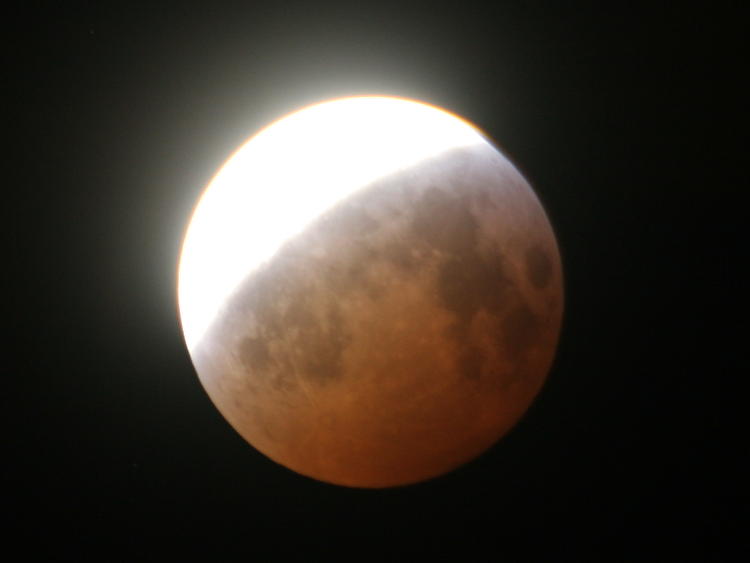
At this point, by naked eye you can’t really make out much red in the shadowed portion at all, and you can see how badly I had to overexpose the sunlit portion to bring out the color in the shadow. This is .8 seconds, f5.6, ISO 320.
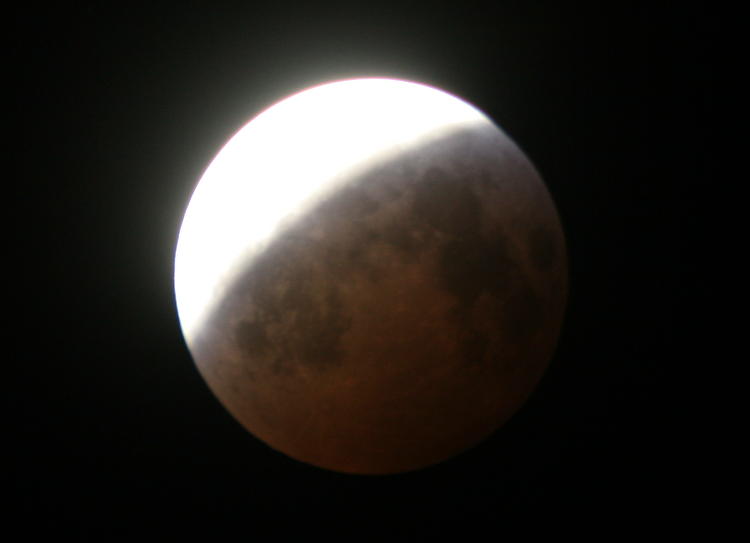
1/4 second, f5.6 at ISO 320. I will use this opportunity to point out how you can tell the difference between photos of an eclipse or simply a crescent moon: moon phases always describe a curve that touches the widest portion of the moon or, if you like, the centerline of the visible portion – call it the ‘poles’ if you like (rarely ever the actual poles, as in the axis of rotation, but the same basic idea.) Here, and especially in the photo from the previous post, you can see the tips of the curve are too far from the centerline.
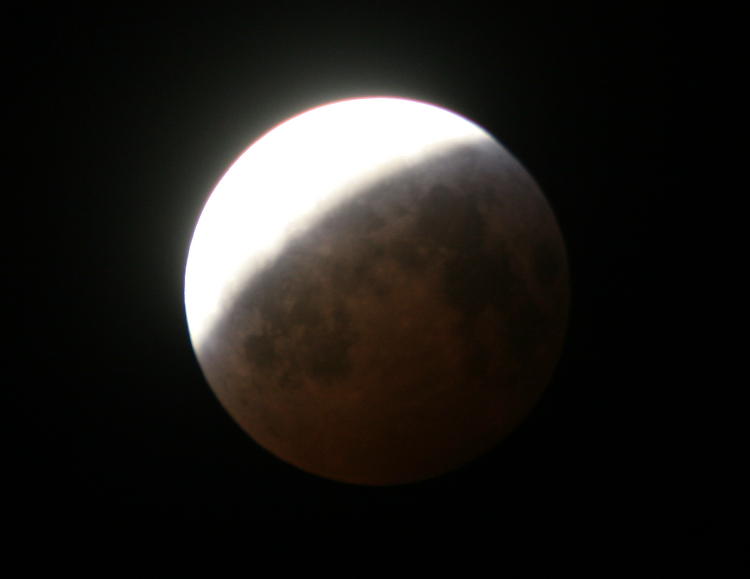
1/5 second, f5.6 at ISO 320. Subtle difference, but 1/3 stop is noticeable in conditions like this.
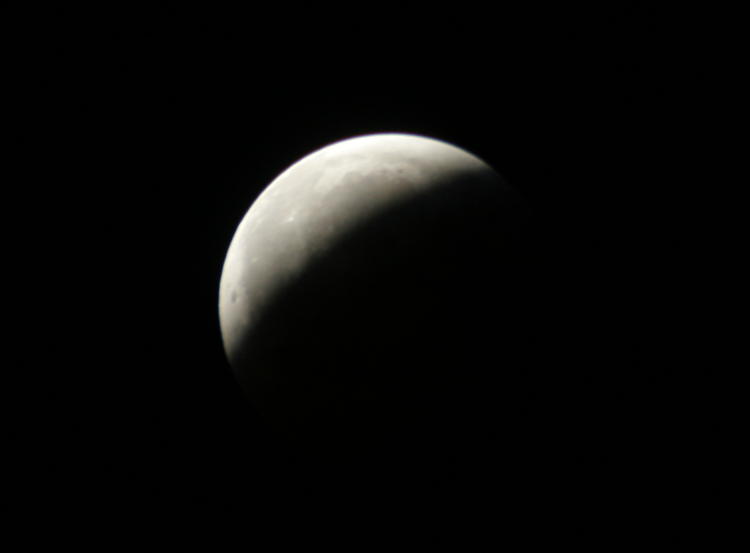
We’ve dropped all the way to 1/80 second, f5.6 at ISO 320 now. The sunlit portion looks just about ‘normal’ while there is nothing to see from the shadowed portion. All four of these images were taken within 130 seconds of each other, so not a lot of motion from the shadow itself and the moon didn’t even leave my shooting frame (all of these are cropped, by the way.) To give you the translated numbers, there are six stops of exposure difference between the first and the fourth in the sequence, which means this last frame admitted 1/64th the light of the first in this series of four, and somewhere around 1/200th the first image in the post. A typical full-moon exposure would be around 1/640 second, f5.6 at ISO 320, but this exposure had to be longer because the sunlit portion is still is Earth’s shadow, the thinner penumbral one. I actually have an illustration I can use for this.
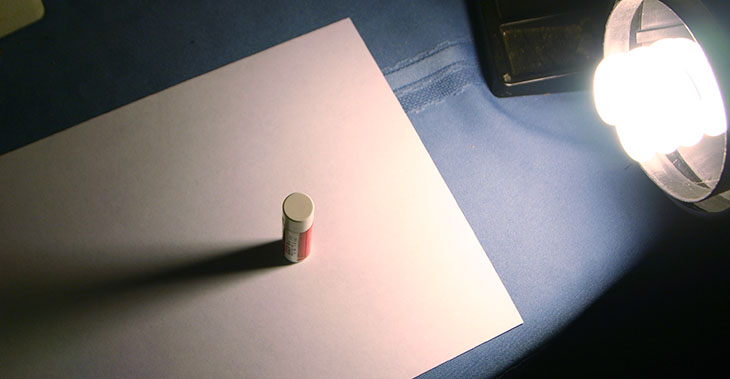
The sun is much bigger than the Earth of course, and while it’s distant enough to make the effect far subtler than this, it works the same. Notice the darkest shadow that gets narrower directly behind the lip balm, but the thinner ones spreading wider to either side of it. A total lunar eclipse occurs when the moon enters that darker shadow, called the umbra, but before and afterward it’s still passing through the lighter shadows to either side, the penumbras, which darken the moon a bit without being very obvious about it. Usually this can’t even be discerned by eye, but it does affect the exposure times for decent detail of the surface.
Anyway, that’s late enough – I’m going to bed.




















































